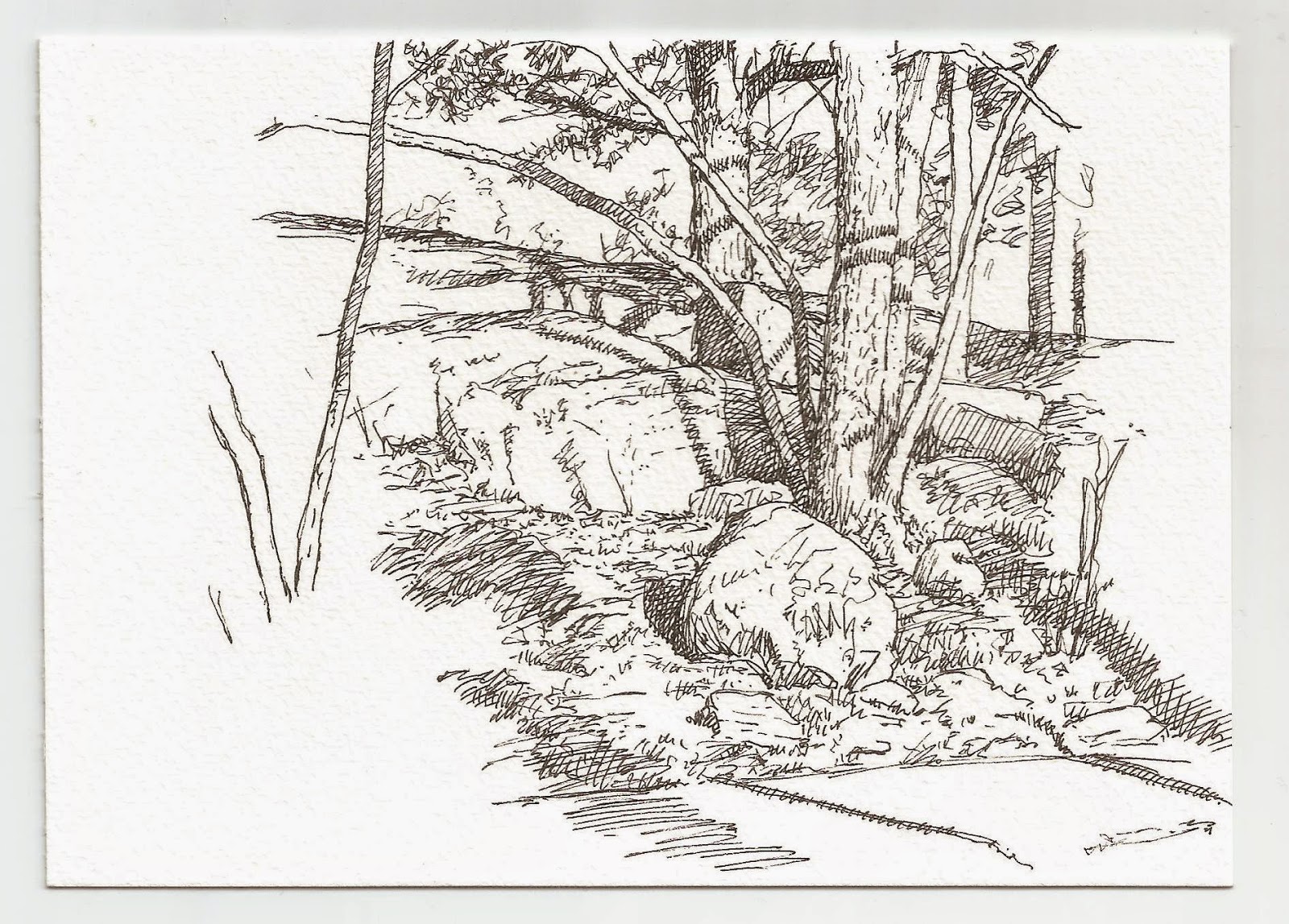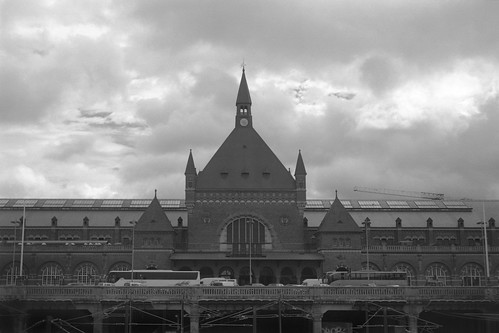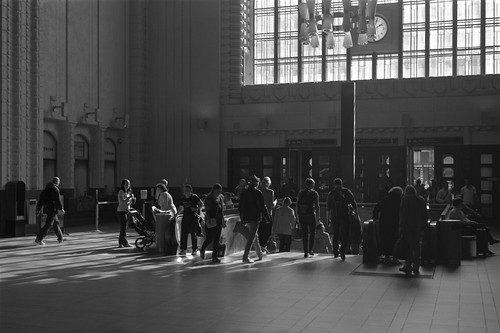"After ten weeks' filming we were still only halfway through, though I'd aimed to finish the film in that time.There was no money to go on filming, and we were a long way short of an ending. The problem was: how should the journey end? Or: how might it be converted into a story? At first I thought of an accident. If it had been shot in America, it would certainly have finished with an accident. But thank God we weren't in America; we were free to do otherwise and get to the 'truth of our story'. Of course a film of that type can be literally neverending, and that's a danger. The solution, finally, turned out to be that the men would have to realize they couldn't go on like that; a break would have to come and they would have to change their lives."As described in the post on 'Ferries', Alice In The Cities ends with a shot of Alice and Philip on the train through the Rhine Valley to Munich, where Alice's mother has been found. Importantly, the film ends here, still in movement: there is no narrative need to depict the moment where mother and daughter are reunited. In the 'road movies trilogy', a sense of narrative resolution and the actual ending of each film do not coincide or cohere; while watching for the first time, the viewer does not know when the film may in fact end, and the point at which the film does end then retrospectively provides a sense of the resolution of the story within each film.
Wim Wenders, 'Impossible Stories', in The Logic of Images
The only 'B-film' in the loose trilogy, in colour and based on a screenplay drawn from a literary source, The Wrong Move ends with Wilhelm, alone, having left behind the odd group of characters that he had accrued on his journey, on top of the highest mountain in Germany, his desire for experience, often vicarious, to make him a writer seems to have left a bitterness and inconclusiveness to his voice over at the point the film finishes. The spur for the break up of the group had been the industrialist's suicide. Peter Handke, who wrote the screenplay based on Goethe's Wilhelm Meister's Apprenticeship, interprets this ending with a note of positivity:
"Wilhelm Meister isn't really the hero at all. The heroes in the story are the individuals like the industrialist in his house, or the actress. Wilhelm attracts them to him, but only in order to get them to reveal something of themselves. They have far more courage and intensity than he does. He's just curious and rather invulnerable. He keeps saying he wants to write. One day he'll put down what he's seen. The heroes are the others."Kings Of The Road ends after Bruno and Robert fight at an abandoned border post, filled with graffiti from American soldiers, images from pornographic magazines and Coca-Cola bottles. Robert wakes up with a black eye. He gets out of the hut, urinates and leaves a note which reads: "Everything must change. So long. R." The film's story lasts as long as the two men are travelling together, from the moment that Bruno watches Robert's half-hearted attempt to kill himself by driving at high speed into a river, to their fight at the end of West Germany. A resolution of sorts is affected when both men confront something of their pasts. According the Wenders, these experiences improve their relationship, which paradoxically creates the situation for them to part: "They split up because, on their journey across Germany, they've suddenly grown too close. It's a story that you're not often told in films about men." (Wim Wenders, 'Kings of the Road', in The Logic of Images).
Peter Handke, 'The Heroes Are The Others', in The Logic of Images
Robert arrives with his suitcase at a small railway station. There's a boy sitting, writing in a notebook:
"What are you writing?"Robert picks up his suitcase which he has been carrying around for the duration of the film. It dangles on one finger.
"I'm describing a station. Everything I see."
"And what do you see?"
"The tracks, the gravel, the timetable,
the sky, the clouds."
"A man with a suitcase.Robert swaps his sunglasses and the suitcase for the notebook. The scene then cuts to Bruno emerging from the hut, finding the note, walking towards the sign that demarcates the state border, and howling. He gets back into the truck. The film cuts to Robert, now on a train, apparently writing in the notebook he had swapped with the boy. The act of writing in Wim Wenders' films of the 1970s often accompanies a sense of accommodation for the characters who are writing: this may be a coming to terms with their past, or an aspect of their character, or Germany itself. Peter Handke believes that Wilhelm will write, "one day" - but this belongs to the future, outside of the film. In Alice in the Cities, Philip begins to write again once he has returned to Europe. Like Alice, the boy in Kings of the Road has the same clarity of vision. In Robert's conversation with him at the station, Wenders appears to be suggesting that the act of describing rather than telling is the medium's true strength. Through the window of the train, in a parallel movement, Bruno's truck is seen on the road. The viewpoint cuts from the train looking out to the truck, to the cab of the truck looking back at the train, as both keep pace with each other. Bruno is signing along to 'King of the Road'. As the train passes a level crossing where the truck is forced to stop, Bruno says, "Kamikaze, don't you think I haven't seen you!" From the train we then see Robert, quoting from something that Bruno said earlier in the film, "Getting by better and better eh?"
An empty suitcase.
A grin.
A black eye.
A fist.
Throwing a stone."
"It's as easy as that?"
"That easy!"
There than follows a brief coda, a bookend like the film's prologue, both showing Bruno talking to owners of the small-town cinemas that Kings of the Road is structured around. In the prologue this is an old man who was a silent film musician ("Those were tough days when the talkies came in.") In the coda, Bruno listens to a women in a cinema that's closed, but she wants to keep it ready for when the films return ("'Film is the art of seeing,' my father said", echoing Wenders himself). Bruno leaves the cinema, walking past the empty display cases where the imprints of long missing images show up on the faded backgrounds of 'this week's' and forthcoming films would be seen. A neon 'WW' is reflected in the windscreen as Bruno gets back into his truck, standing for the name of the cinema that is revealed as the camera pans away: Weisse Wand Lichtspiele. As well as the 'WW' only three of the letters of the sign are lit: the e and the nd.












